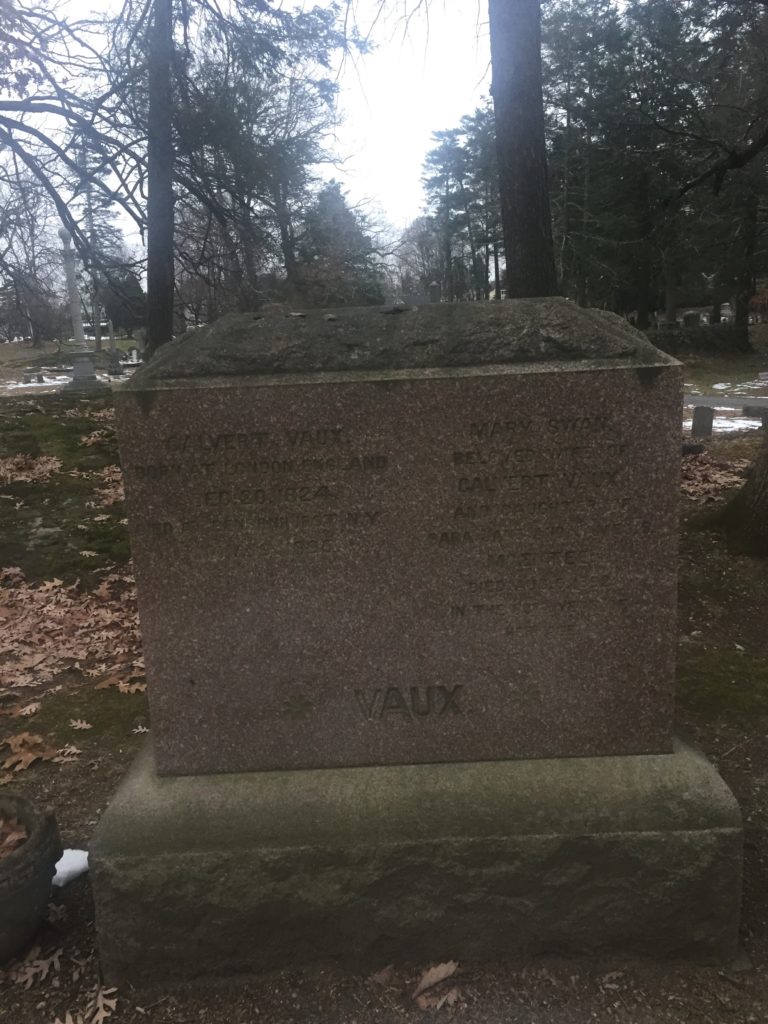Erik Visits an American Grave, Part 569
This is the grave of Calvert Vaux.

Born in London in 1824, this son of a doctor was trained as an architect from a young age. Specifically, he was placed under the tutelage of Lewis Nockalls Cottingham, who helped lead this movement. He worked under Cottingham until 1850. That year, he decided to make his fortune in the United States. A skilled artist as well, he spent the journey across the Atlantic painting watercolors. He got them displayed the next year in New York. This caught the eye of Andrew Jackson Downing, the landscape architect. Evidently, Vaux headed back to London because Downing went there to find him and offer him a job. He wanted someone who would visually integrate architecture into the landscape and Vaux was his man. In fact, Vaux is the person who created the term “landscape architect” to describe the work people such as he and Downing did.
So Vaux moved back to the U.S. and worked with Downing for a couple of years. But then Downing died in a steamboat accident. Vaux took over the firm and became a major player in the American architectural world. He helped found the American Institute of Architects. Then, in 1857, he hired a young landscape architect by the name of Frederick Law Olmsted. Olmsted had never before designed a landscape architecture plan but the two of them went all-in on the design for Central Park. Together, they fought hard to get it built. Many of the battles were political, fighting off people with different agendas, but they saw it through. Olmsted became the more famous of the two, but most of the early design belonged to Vaux.
Building upon their titanic success in New York, in 1865, they founded Olmsted, Vaux, and Company. This became the major landscape architecture firm in that glorious period of big projects. They designed all sorts of things, from Prospect Park in Brooklyn to the early Riverside suburb in Chicago. He built other parks in Buffalo and Chicago. They went their separate ways in 1872, which is when Olmsted really became famous. But Vaux remained a huge player in American architecture, both landscape and otherwise. He designed the original buildings of the Metropolitan Museum of Art and American Museum of Natural History, for instance. Most of this projects were in New York, but some were outside the city as well. In 1889, he and Olmsted got the band back together to design a park in Newburgh, New York, in honor of Downing, who mentored both.
In 1895, Vaux drowned in the appropriately named Gravesend Bay in Brooklyn.
Calvert Vaux is buried in Montrepose Cemetery, Kingston, New York.
If you would like this series to visit other architects, you can donate to cover the required expenses here. Andrew Jackson Downing is in Newburgh, New York and Frank Lloyd Wright is in Scottsdale, Arizona. Previous posts are archived here.


